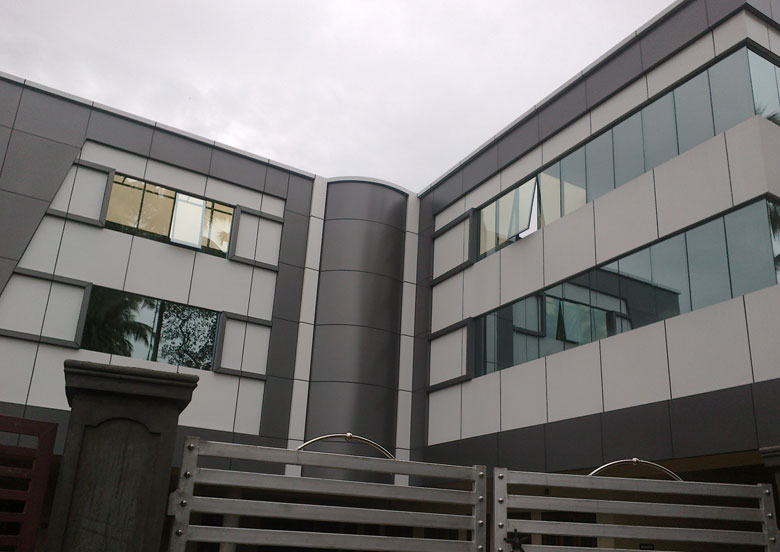
Painting and Acp panneling works
Painting and ACP (Aluminum Composite Panel) paneling are two distinct construction activities that involve enhancing the aesthetics and protection of a building's exterior or interior. Here's an overview of painting and ACP paneling works:
Painting:
Painting involves applying a coating of paint to surfaces such as walls, ceilings, trims, doors, and other architectural elements. It serves both functional and decorative purposes, providing protection against weathering, corrosion, and wear, while also enhancing the visual appeal of the space. Here are the key steps involved in painting work:
a. Surface preparation: This includes cleaning the surface, removing dirt, dust, grease, and loose paint. It may also involve sanding or priming the surface to create a smooth and suitable base for paint adhesion.
b. Priming: Priming is often done to improve paint adhesion, cover stains, and promote uniformity in the final paint finish. It helps ensure better durability and color retention.
c. Painting application: Paint is applied using various techniques such as brush, roller, or spray. Multiple coats may be applied, allowing sufficient drying time between each coat. Different types of paints (e.g., latex, oil-based, enamel) may be used based on the specific requirements of the project.
d. Finishing touches: After the paint has dried, finishing touches such as trimming, touch-ups, and cleanup are done to achieve a neat and professional appearance.
ACP Paneling:
ACP paneling involves the installation of Aluminum Composite Panels, which are flat panels consisting of a core material sandwiched between two aluminum sheets. ACP paneling is widely used in exterior cladding systems for buildings due to its durability, lightweight nature, and versatility. Here are the key steps involved in ACP paneling work:
a. Measurement and cutting: The ACP panels are measured, marked, and cut to the required dimensions based on the building design and layout.
b. Substructure preparation: A substructure or framework is constructed on the building facade to provide support and attachment points for the ACP panels. This includes installing support brackets, framing, and insulation as necessary.
c. Panel installation: The ACP panels are installed onto the substructure using appropriate fixing systems, such as screws, rivets, or adhesive bonding. Panels are aligned and secured to ensure a consistent and even appearance.
d. Sealing and finishing: Joints between ACP panels are sealed using appropriate sealants to ensure weatherproofing and prevent water ingress. Finishing elements such as corner trims and flashings are installed to provide a clean and professional finish to the paneling system.